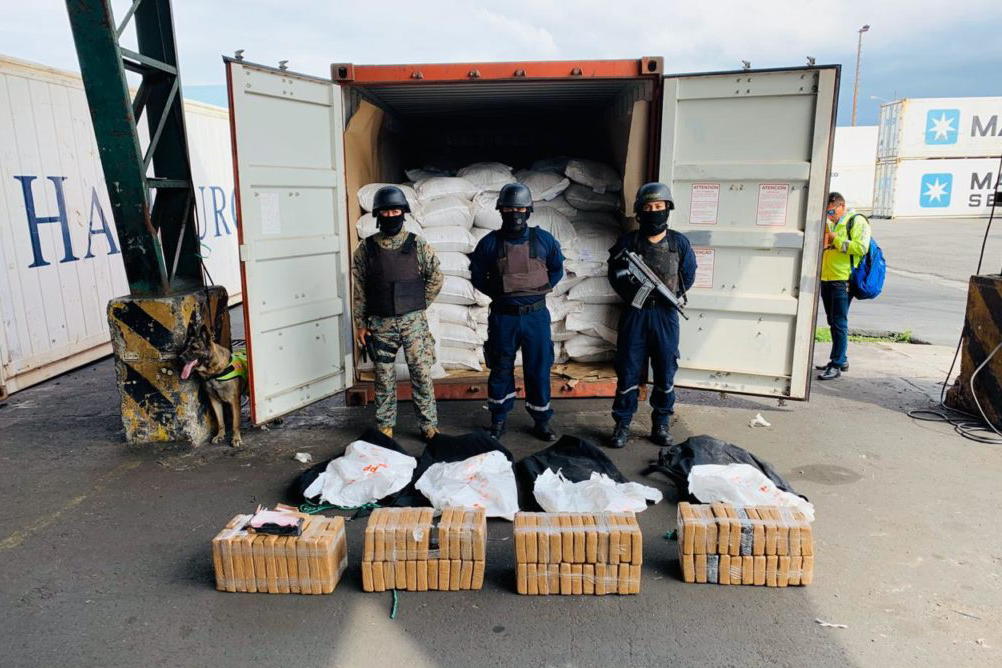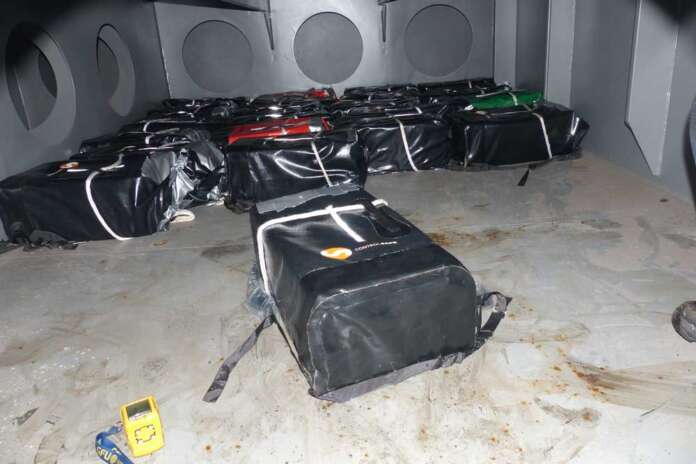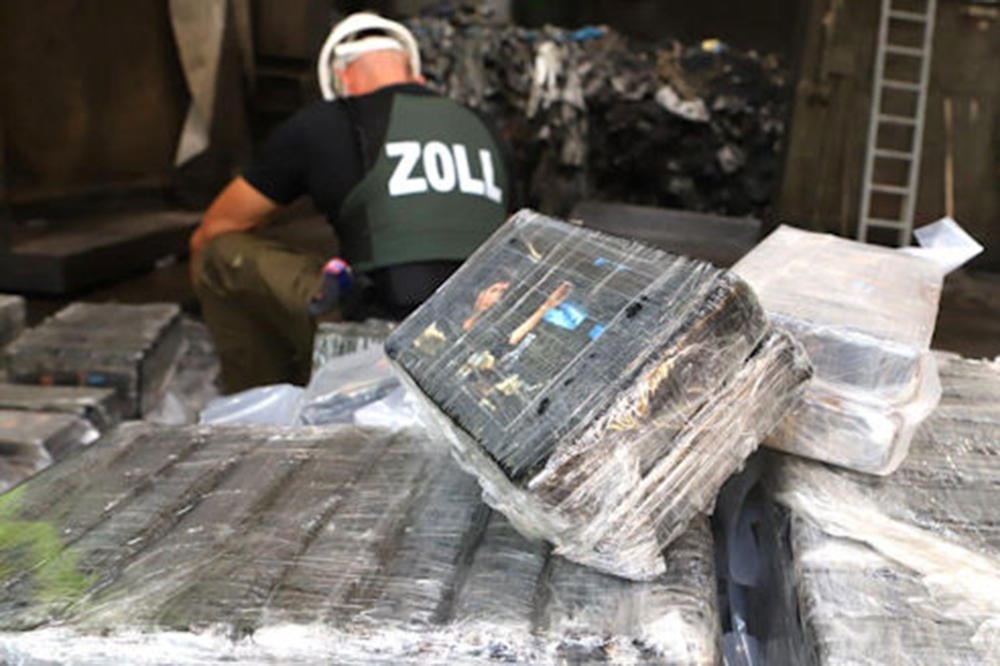With an estimated value of 400 bn $, the trade in illicit drugs is a high stakes business whose operatives eagerly exploit vulnerabilities in the legitimate supply chain. A view on recent developments in risk
Given their global reach and lighter security than aircraft, ships are an attractive target for drug traffickers. Despite the marine[ds_preview] industry’s best efforts, criminals can be ingenious and often stay one step ahead of detection.With over 90% of goods transported globally by sea, and constantly changing trading patterns between emerging and developing countries, the huge number of ports and routes works to a trafficker’s advantage. As drug routes become known and are targeted by authorities, cartels can switch to indirect routes and ports with weaker enforcement, sometimes in a different country.However, for a drug-trafficking organisation, choosing the right route means nothing if the package is not well hidden.
Depending on the kind of vessel, different methods of concealment may be used. On bulk cargo ships, narcotics are commonly hidden inside the stow, while on container vessels, traffickers may break into a container and secrete the contraband among the cargo, replacing the security seal afterwards. Reefer containers have many places where drugs can be hidden. Illicit goods can be hidden in cars, trailers or coaches on RoRo vessels, or simply carried on by a passenger or crewmember and left somewhere out of sight.Drugs can also be stored inside a metal container – or »parasite« – which is fixed to the hull or other external structure of larger ships. Speedboats are sometimes used to attach drugs to moving vessels.
A high-stakes business model
One of the most commonly smuggled drugs is cocaine. In Colombia, the narcotic is cheaper to produce per gram than coffee, its profit margins considerably greater.
It is little surprise, then, that when ships are seized for transporting drugs, the offending article is so often cocaine. This February, for instance, Aruban authorities near to Venezuela intercepted a general cargo vessel bound for Greece, finding five tons of the illicit substance on board. Likely the biggest bust in Aruban history, it pales in comparison to an incident last year, in which four times as much cocaine was discovered on a container ship crossing the Atlantic en route to the Netherlands.
As recently as April of this year, Guatemalan Navy divers found 30 packages of cocaine stored inside a parasite attached to the rudder of a cargo ship.The 2019 EU Drugs Market Report, prepared by the European Monitoring centre for Drugs and Drug Addiction and Europol, indicates that in 2017 cocaine seizures in the EU hit record levels, reaching 104,000 seizures amounting to 140t. Although all of these attempts to move contraband undetected were ultimately foiled, plenty more prove successful.
Pawns in multibillion-dollar game
If a vessel is being used to smuggle drugs, it is highly plausible that the crew are innocent and often have no idea that drugs are on board. Stevedores and other land-based individuals can use their presence on board for illegitimate purposes. Criminals may use covert tactics to conceal drugs on board. Nevertheless, crew will clearly be a focus for investigators. In addition to those actively seeking to profit, crew can become the target of professional traffickers who either befriend them during shore leave or take advantage of any money worries they might have or indeed a drug addiction.
Blackmail might also be a factor.In some cases, a courier might not be aware of the presence of a »minder«, whose purpose is to ensure nothing prevents the courier from doing their job even if it means interrupting the operation of the ship. Why traffickers target crew is no mystery. They have special access to suitable hiding places on board, including tanks, storerooms and other enclosed areas. Even if the crewmember is not the actual courier, they can facilitate the passage of drugs on and off the ship.
Whatever the backstory, the consequences for those implicated can be huge. Drug finds in the cargoes on board four bulk carriers in Mexican ports since June 2019 led not only to vessel detentions, but to the arrest the crews, with blame placed squarely on them. While secondary to the plight of innocent seafarers, the commercial impact of a drugs bust can also be considerable for the vessel, its managers and owners. Ships found to be transporting drugs have been detained in excess of six months, with operators often facing severe fines as well as lost revenue.
Keeping drugs off vessels
There is no silver bullet to keep a determined trafficker at bay; entire books have been written offering guidance on the subject and it is not possible to look at them all. However, priorities need to be made to protect ships from contraband. At a very straightforward level, if port security is lax the ship may need to up its game, and a vessel that looks like it takes security seriously is a less attractive proposition to a smuggler. A strong security presence on the gangway is paramount but restricting access around the vessel and maintaining good lighting on deck are also effective deterrents.
Locking doors that lead into the accommodation, storerooms and technical spaces takes away an easy opportunity to hide packages. If CCTV is fitted, then it needs to be in good working order as well as covering the right areas. Other simple steps can also be effective: shipmasters and crew should monitor the vessel’s surroundings for any suspicious behaviour, for example. Again, if a port has a history of smugglers attaching drugs to the propeller suitable preventative measures should be taken. Searching a vessel for small packages of drugs is a huge undertaking for a small number of crew. But high-risk easily accessible areas can be checked before sailing.
One step ahead
The shipping industry should be aware of the rise in cocaine finds on vessels trading from Colombia to Mexico, for example, especially between Barranquilla and Altamira. Another recent spike in incidents has involved the smuggling of cocaine from Ecuadorian ports, with finds made at discharge in ports in Turkey and Algeria. North and other P&I clubs work closely with members and local authorities to try and get detained vessels released as soon as possible.
It is nonetheless fair to conclude that professional drug traffickers will continue to find ways to smuggle their product onto ships; for them, the potential reward is worth the risk. Therefore, vessel operators trading in areas known for high levels of criminal activity should exercise vigilance, follow best practices and promptly report the discovery of any illicit drugs to the relevant authorities. At the same time, there must be an appreciation that ships and crew can only do so much to prevent the global trafficking of illegal narcotics and the industry should continue to guard against attempts to criminalise innocent seafarers.
Mark Smith / Loss Prevention Executive – North P&I Club
























